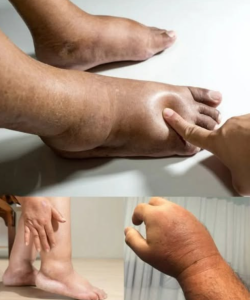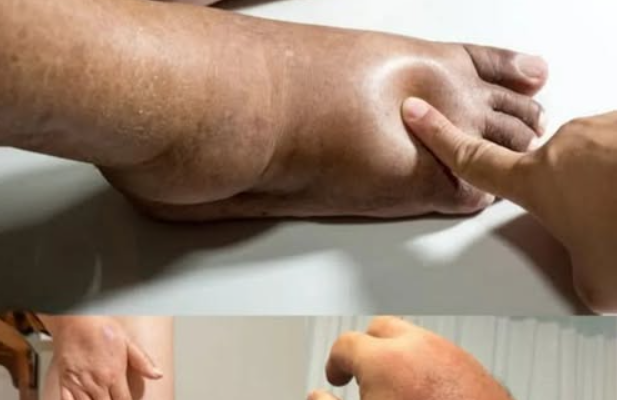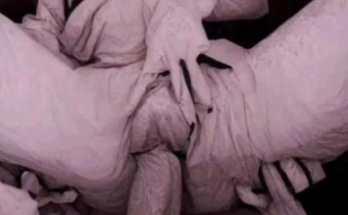10 Symptoms of Diabetes That May Show Up in Your Feet
When people think of diabetes, they often focus on blood sugar levels, diet, or the need for medication. But one of the areas most affected by this condition is actually the feet. Since diabetes affects circulation, nerves, and the body’s ability to heal, the feet can often reveal some of the earliest—and most serious—signs of trouble. Paying attention to these symptoms can help prevent complications such as infections, ulcers, or even amputations. Below are 10 key symptoms of diabetes that may appear in your feet, what they mean, and why you should never ignore them.
1. Numbness or Tingling (Peripheral Neuropathy)
One of the most common symptoms of diabetes in the feet is a persistent tingling or “pins and needles” sensation. Over time, high blood sugar damages the nerves, especially in the extremities like the toes. This condition, known as peripheral neuropathy, can make your feet feel like they’re buzzing or slightly asleep. Numbness is equally dangerous because it prevents you from noticing small injuries, blisters, or cuts that can later become infected.
2. Burning or Sharp Pain
While some people lose sensation, others may experience the opposite: burning, stabbing, or shooting pain in their feet. This painful neuropathy can worsen at night, making it hard to sleep. The pain happens because damaged nerves send faulty signals to the brain. Even light touch, such as bed sheets brushing against your feet, can feel unbearable. Recognizing this pain as a possible complication of diabetes is important, since it often signals worsening nerve damage.
3. Frequent Foot Infections
Cuts, scrapes, or even fungal infections like athlete’s foot may occur more frequently in people with diabetes. High blood sugar weakens the immune system, slows healing, and creates an environment where bacteria and fungi thrive. Something as minor as an ingrown toenail can quickly turn into a stubborn infection. If your feet seem prone to infections or take much longer to heal than expected, diabetes could be the underlying cause.
4. Slow-Healing Wounds or Ulcers
One of the most concerning foot problems in diabetes is the development of non-healing wounds, known as diabetic ulcers. Because circulation is impaired, blood cannot efficiently deliver oxygen and nutrients to damaged skin. As a result, even a small blister from a new pair of shoes may refuse to heal, instead deepening into a serious ulcer. Left untreated, these ulcers can lead to gangrene and require surgery.
5. Dry, Cracked Skin
Diabetes often affects sweat glands and oil production in the skin, leaving feet excessively dry. Cracked heels and peeling skin may seem harmless, but these small breaks allow bacteria to enter. Over time, untreated dryness can cause painful fissures. People with diabetes should keep their feet moisturized and avoid harsh soaps that strip natural oils.
6. Changes in Skin Color or Temperature
If your feet appear unusually pale, reddish, bluish, or blotchy, this may indicate circulation issues caused by diabetes. Cold feet are another red flag, as reduced blood flow makes it hard for warmth to reach the extremities. These changes are not just cosmetic—they suggest vascular problems that increase the risk of infections and tissue damage.
7. Swelling (Edema)
Unexplained swelling in the feet or ankles could be linked to poor circulation, kidney issues, or heart strain—conditions that often accompany diabetes. If your shoes suddenly feel tighter or your feet look puffy, it may be your body signaling that fluid retention is occurring. Persistent swelling should never be ignored, as it can point to worsening complications.
8. Ingrown Toenails and Nail Infections
Diabetes makes toenails more vulnerable to problems. Nails may become thick, brittle, or yellow due to fungal infections. Ingrown toenails—where the edge of the nail grows into the surrounding skin—are especially dangerous. For someone with diabetes, an ingrown nail can easily lead to an infection that spreads quickly. Regular nail care and professional podiatry visits are essential.
9. Loss of Hair on Toes or Feet
You might not think much about hair growth on your toes, but its disappearance can be an early sign of poor circulation. Blood vessels supply oxygen and nutrients to hair follicles; when circulation declines due to diabetes, hair growth suffers. This subtle change often happens before more serious vascular complications appear.
10. Foot Deformities or Charcot Foot
In advanced cases, nerve damage and weakened bones can lead to structural changes in the feet. One such condition is Charcot foot, where the bones become brittle and fracture easily. The arch may collapse, creating a “rocker-bottom” shape. Because people with neuropathy may not feel pain, they continue walking on injured bones, making the deformity worse. Catching these changes early is critical to prevent permanent disability.
Why the Feet Are So Vulnerable in Diabetes
The feet are uniquely at risk in people with diabetes for two main reasons: nerve damage (neuropathy) and poor circulation (peripheral arterial disease). Combined, these issues create a dangerous cycle: you may not feel injuries because of nerve damage, and your body cannot heal them properly because of poor blood flow. That’s why simple problems—like a blister, callus, or dry skin—can spiral into severe infections or even amputations if ignored.
Protecting Your Feet if You Have Diabetes
The good news is that many complications can be prevented with consistent care:
-
Inspect daily: Check your feet for cuts, redness, swelling, or changes in skin color.
-
Keep them clean and moisturized: Wash gently with warm (not hot) water, dry thoroughly, and apply lotion (but not between the toes).
-
Choose proper footwear: Wear comfortable, well-fitting shoes and avoid walking barefoot.
-
Trim nails carefully: Straight across and not too short, or have a podiatrist handle them.
-
Control blood sugar: Maintaining healthy glucose levels reduces the risk of nerve and vascular damage.
-
Seek medical care early: If you notice any wounds that don’t heal or changes in foot shape, see a doctor right away.
Final Thoughts
Diabetes is often called a “silent disease” because its complications can sneak up quietly. Your feet, however, may tell the story before other parts of your body do. From numbness and infections to slow-healing wounds and deformities, these 10 symptoms are powerful warning signs. By staying vigilant and taking proactive steps, you can protect your feet, preserve mobility, and prevent serious complications.
Your feet carry you through life—it’s worth giving them the care and attention they deserve, especially if you’re living with diabetes.

